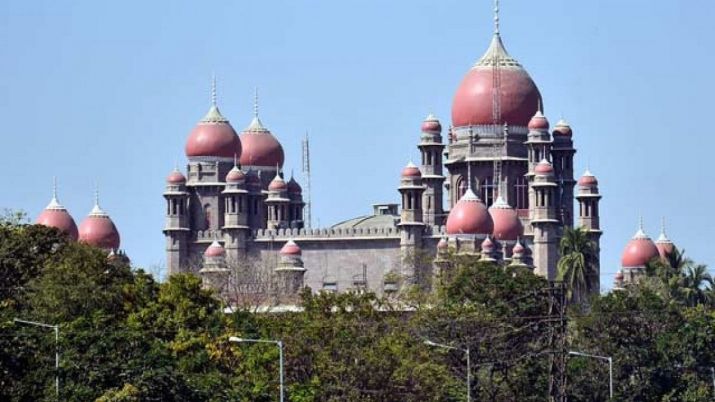
Telangana House party merger: HC grants Speaker 4 weeks to respond

More than 18 months after 12 MLAs and four MLCs, elected on Congress Party tickets, defected to the ruling Telangana Rashtra Samithi (TRS) in Telangana by way of merger of legislature party with two thirds strength, the Telangana High Court, acting on a petition questioning the merger, has issued notices to all the respondents. The case has also thrown it open to debate if legislature parties can be merged without the actual merger of the parties.
A bench of chief justice Hima Kohli and justice B Vijaysen Reddy recently served notices to Assembly Speaker, Council Chairman and secretaries of the two legislative bodies and the Election Commission, calling for explanations on how 12 MLAs and four MLCs elected on Congress tickets were allowed to join the TRS without relinquishing their legislator posts. They were given four weeks’ time to respond. The court also ordered serving notices on the defected MLAs and MLCs, while hearing the petitions filed by Congress Legislature Party (CLP) leaders Mallu Bhatti Vikramarka (Assembly) and Mohammed Shabbir Ali (Legislative Council).
Related news: Telangana malnourished under KCR, my party is ray of hope: YS Sharmila
The case raises a constitutional debate on political mergers. The Congress contended that the merger of two legislature parties cannot happen unless the parties merge first. Merger of parties is a process that happens with the approval of the rank and file of the party, which means from the grassroots of village-level to the national level (since Congress is a national party). Once the parties merge and the Election Commission approves it, the legislature parties can merge, senior advocate Jandhyala Ravi Shankar, the legal counsel for the Congress party told The Federal.
The court during the hearing granted Ravi Shankar permission to serve personal notices on the authorities of Assembly and Council and on the Congress legislators who had jumped to the treasury benches.
The petitions were pending, after previous chief justice RS Chauhan deferred hearing and now came up before the bench since the regular hearings began after the COVID-19 pandemic.
During the course, a couple of the defected legislators, including P Sabita Indra Reddy were sworn in as ministers in K Chandrasekhar Rao cabinet.
How the merger came about
In the 2018 Assembly elections, the TRS won 88 while the Congress won 18 seats.
Within months, as many as 12 MLAs and four MLCs of Congress decided to leave the Congress and join the ruling party. They announced merging the Congress legislature party with the TRS legislature party.
Accordingly, the Legislature Secretariat issued a bulletin in June 2019, on behalf of the Assembly Speaker, recognising such a merger without acting on the petitions filed by Congress for their disqualification. The Supreme Court orders in previous instances stipulate that the Legislature should first decide on the disqualification petitions filed by the parties on whose tickets the members got elected.
“The statutory institution should have heard those who filed the caveat petitions filed by the party president and the CLP leaders. But, without that, it went on to issue the bulletin,” said Ravi Shankar, who was the legal advisor to the Assembly of the undivided Andhra Pradesh.
Related news: Poll code violation cases in Telangana ‘a farce’ as politicians walk free
The floor leaders of the Congress in Assembly and Council have in separate petitions questioned the decision of the Speaker and Chairman, respectively, on issuing bulletins recognising the merger of the Congress legislature party into the ruling party. They also challenged the jurisdiction of the Assembly Speaker and Council Chairman arguing that their decisions were contrary to the provisions of the Indian Constitution specified under Articles 102, 191 and 324 and Schedule X of the Constitution.

